No products in the cart.
The Ultimate Guide to Marketing and Selling an Online Course
Dreaming of a six-figure boost to your business earnings?
Try selling courses online.
Now, I get it, you might be thinking, "Aren't courses just a drop in the already overflowing eLearning ocean?" Here’s a not-so-secret fact: the eLearning industry is still growing. In fact, it’s projected to break $1 trillion by 2028, and Udemy alone has over 59 million learners and over 213,000 courses. That’s almost seven times the population of New York City!
All signs point to a booming market for businesses to scale their expertise (and build their revenue). You’re in good company, and there is plenty of room to grow.
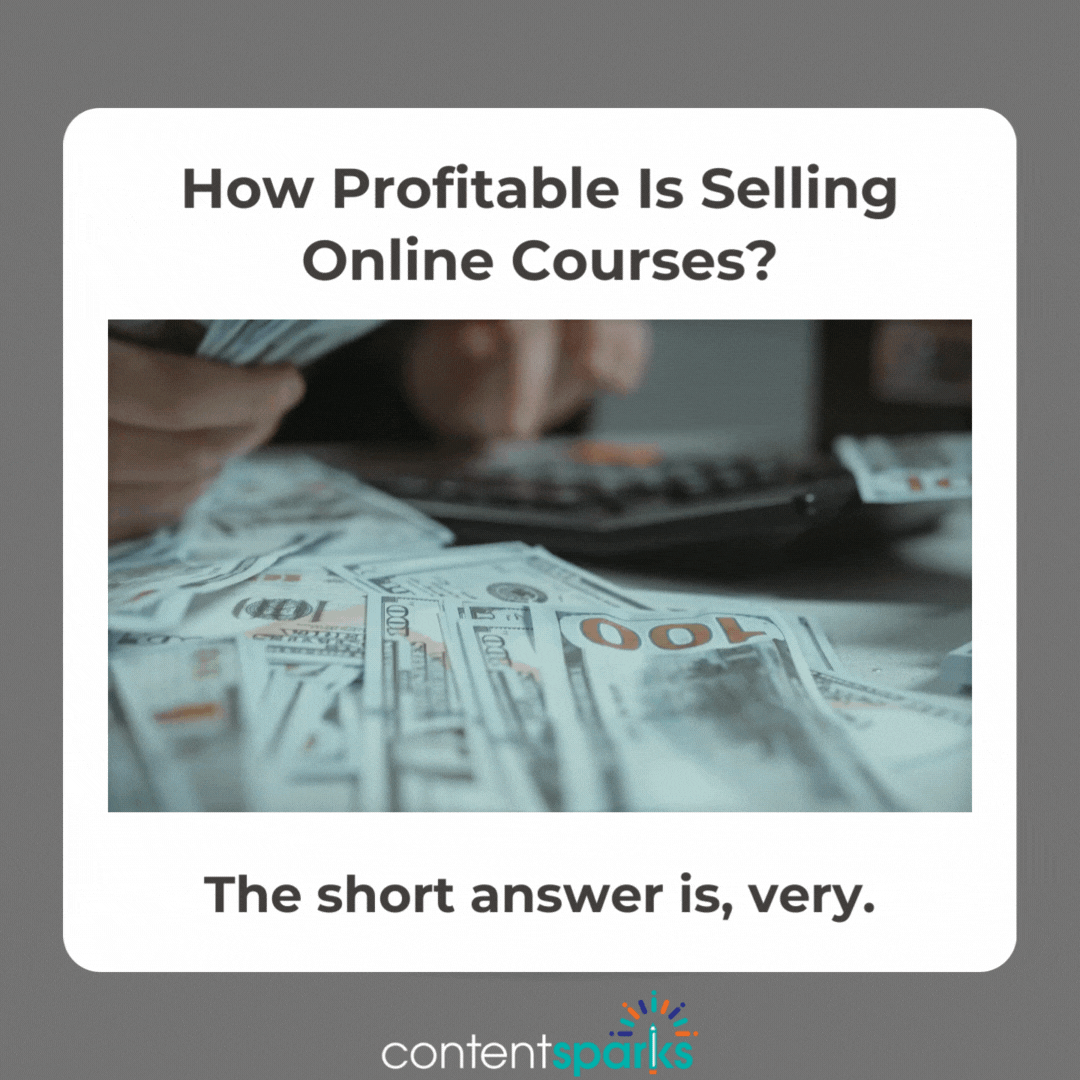
However, crafting a killer online course is just half the battle. To truly rise above the fray, and unlock a new passive income stream, you've got to ace the marketing game. If selling services is your jam, marketing a course might feel like switching from rock to jazz. But stick with me, and by the end of this guide, you’ll be a course-selling pro.
In this guide, I will show you:
Eager to skyrocket your business and unearth that new revenue stream? Grab your pen and notepad, and let's dive in!
Why Sell an Online Course?
With all the work on your plate, should you really spend time developing and selling courses?
Absolutely! And just so you know this isn’t any of my bias doing the talking, here are three excellent reasons why you should consider selling an online course.
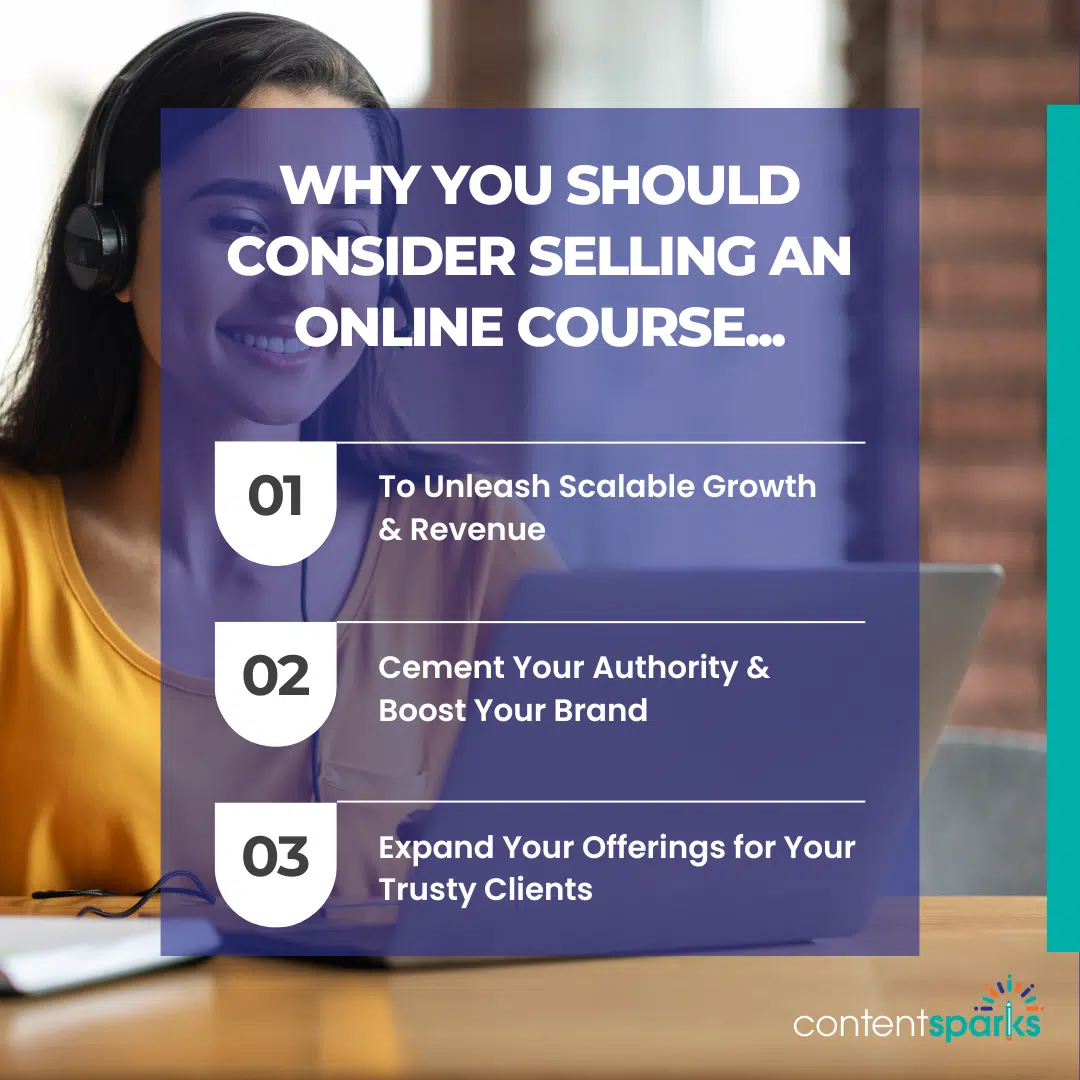
Believe me, this is just skimming the surface. But enough appetizers, let’s dive deep into the main course of marketing and selling.
How Profitable Is Selling Online Courses?
The short answer is, very.
I’ve had the privilege of serving thousands of amazing business owners just like you, and when they take action, each one has transformed their business by selling online courses. You can read some of their stories here to get a sense of how impactful selling a course can be for your business.
There are two key ingredients that go into a profitable course:
The cost of creating a course depends on:
Assuming you value your time at a minimum of $50/hour, I’d estimate that the cost of labor to create an online course can be $1,500 - $4,250, which means the total cost to create your course will likely be somewhere between $2,000 and $5,000 (depending on extra equipment and software). Learn more in my guide to the cost of creating an online course to get a more in-depth breakdown.
So you know your costs, what will you price your course to be profitable?
Again, the price you set will depend on the type of course you create as well as the extra value you provide through the course. An online course can be priced as low as $100 and as high as $2,000 or more, so check out my guide to pricing a course if you are brand new to the subject. From there it’s a matter of arithmetic; if your course costs $2,000 to make and you price your course at $200, then you need to make 10 sales to break even and 11 to become profitable. Hopefully, you’ll sell dozens, or hundreds, and generate a good profit out of the starting gate!
Remember, the more value you add to your course, the higher the price you can sell it for!
Choose a Platform to Sell Your Online Course
Now that you have a course ready to sell, let’s choose a platform to sell it on and host your course content.
No two online course platforms are alike, but there are several features to look for in the platform that you choose. Ultimately, it depends on your needs, your technical skills, and the time you have available to manage the platform. Here are some of the top features to consider:
Learn more and browse my seven favorite course platforms to choose from in my guide to choosing an online course platform.
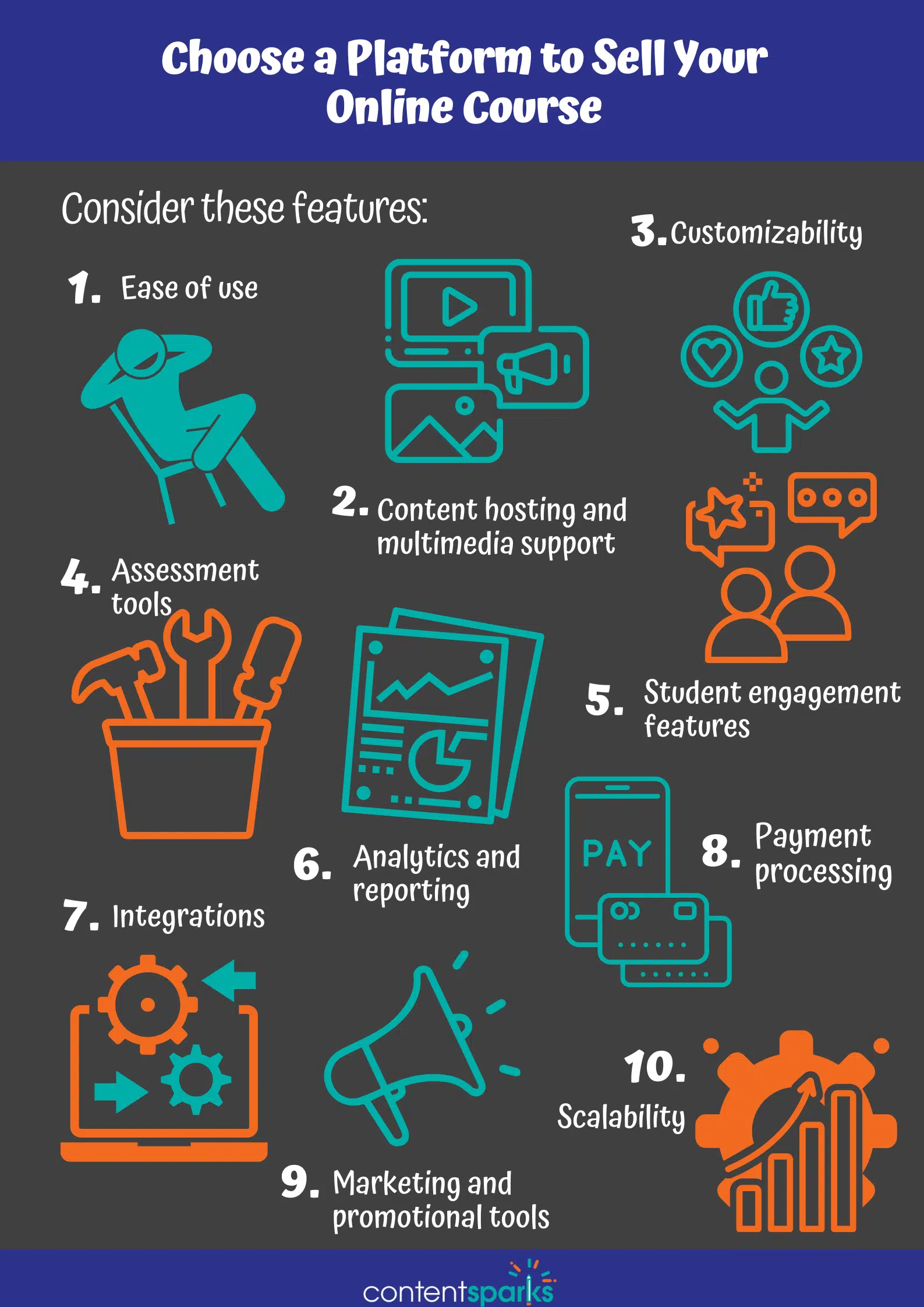
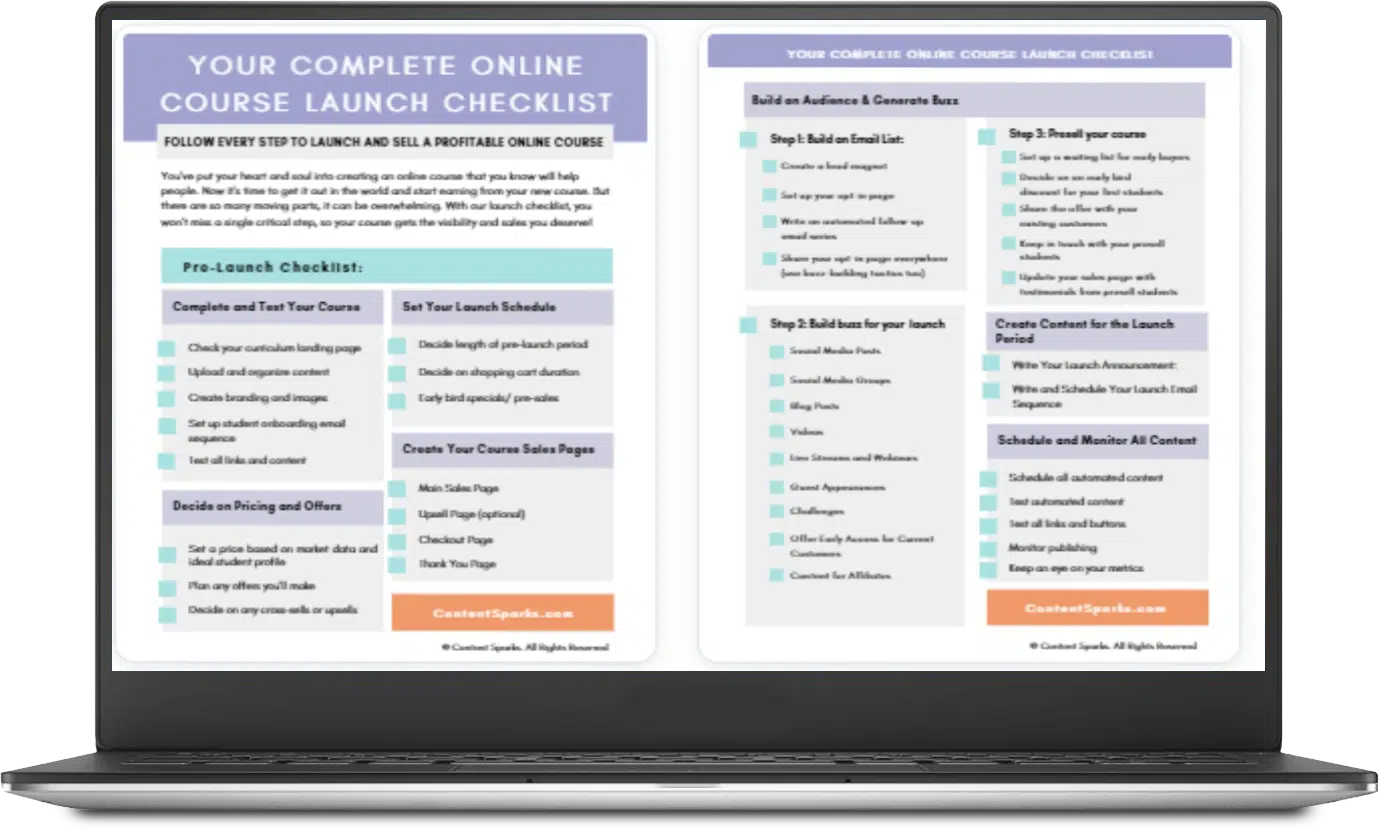
The Ultimate Online Course Launch Checklist
Use this checklist to take action with your online course today!
How to Market and Promote Your Online Course
You have a course ready to sell and a platform to host your content, it’s time to roll out the red carpet and introduce it to the world!
Crafting the course might've been a breeze (especially if you purchased a ready-to-sell PLR course), but showing it off? That's where the real hustle starts. Marketing might sound like scaling Mt. Everest, but with a backpack brimming with tricks, there's no stopping you from making your course a rousing success.
Before You Launch, You Need a Launch Plan for Your Course
Launching a successful course requires a coordinated effort and some carefully orchestrated planning on your part.
One of the big differences between a profitable online course and one that languishes in the nether regions of the internet is the foundation it’s built on. Don’t fret! If your course is going to be built on a rock-solid foundation, here’s what to expect.
You need to…
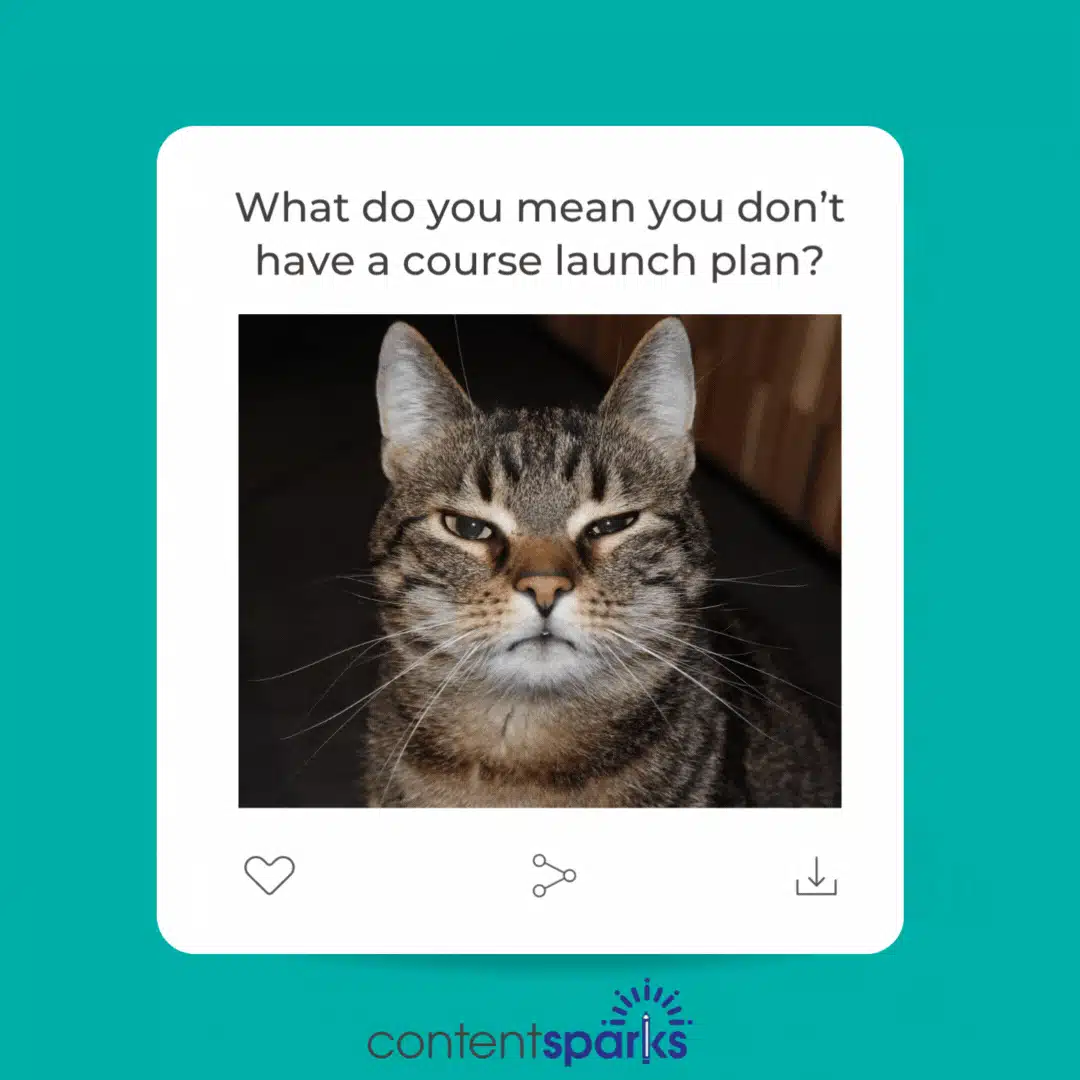
Check out my ultimate guide to building a course launch plan (including a free checklist) for a complete breakdown.
Build an Audience for Your Online Course
Selling is a dream when you have eager ears tuned in.
Cold-selling to strangers? Now that requires some commitment, consistency, and finesse. So, weave your web, gather a crowd, and watch your chances of success soar.
Here are some quick tips to build your audience before you launch:
Learn more about building a massive audience for your course in my guide, it will save you hours (and quite a bit of stress) when you are ready to launch.
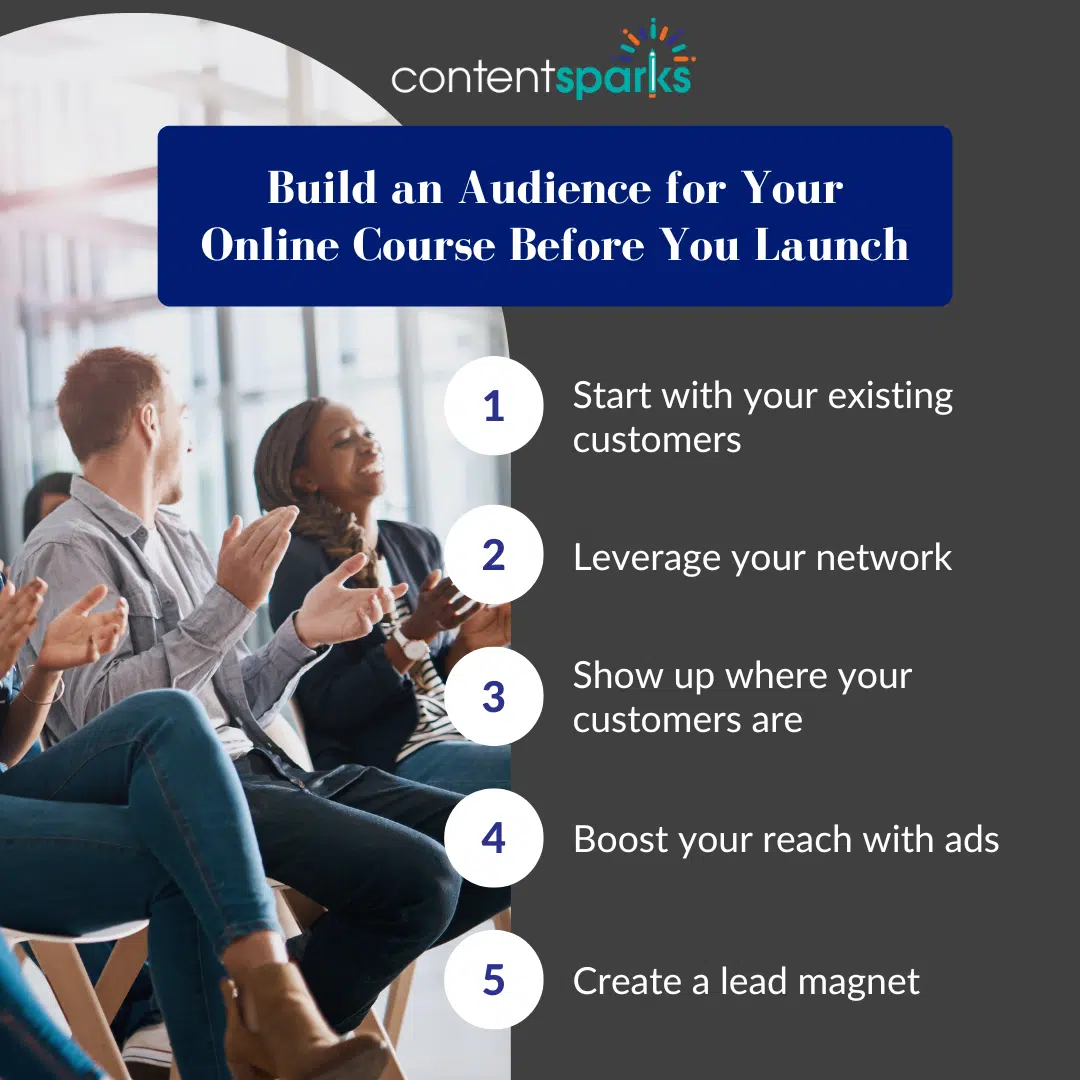
Choose Your Channels To Promote Your Online Course
Now let’s start promoting!
Sure, the audience you worked hard to build will cheer for you, but don’t stop there! Broaden your horizon, and your course's voice will echo farther and wider. Picking the right channels can make your course the talk of every virtual water cooler:
Some of my favorite course promotion channels include:
And that’s just scratching the surface. Check out my 19 favorite course promotion channels and pick 3-5 of your favorites in your next launch!
Pre-Sell Your Online Course Before You Launch
What does every hot summer blockbuster do before finally hitting theaters? Drum up a bit of excitement with teasers, giveaways, and early access sneak peeks.
Your course deserves its own Hollywood treatment and you can do that by preselling your course. By selling spots in your course before you create the entire program, you can build excitement and get valuable feedback on the course before its official launch.
Pre-selling a course can easily become an intense process on top of marketing and selling your course, but here’s a simple process to follow to make it simple:
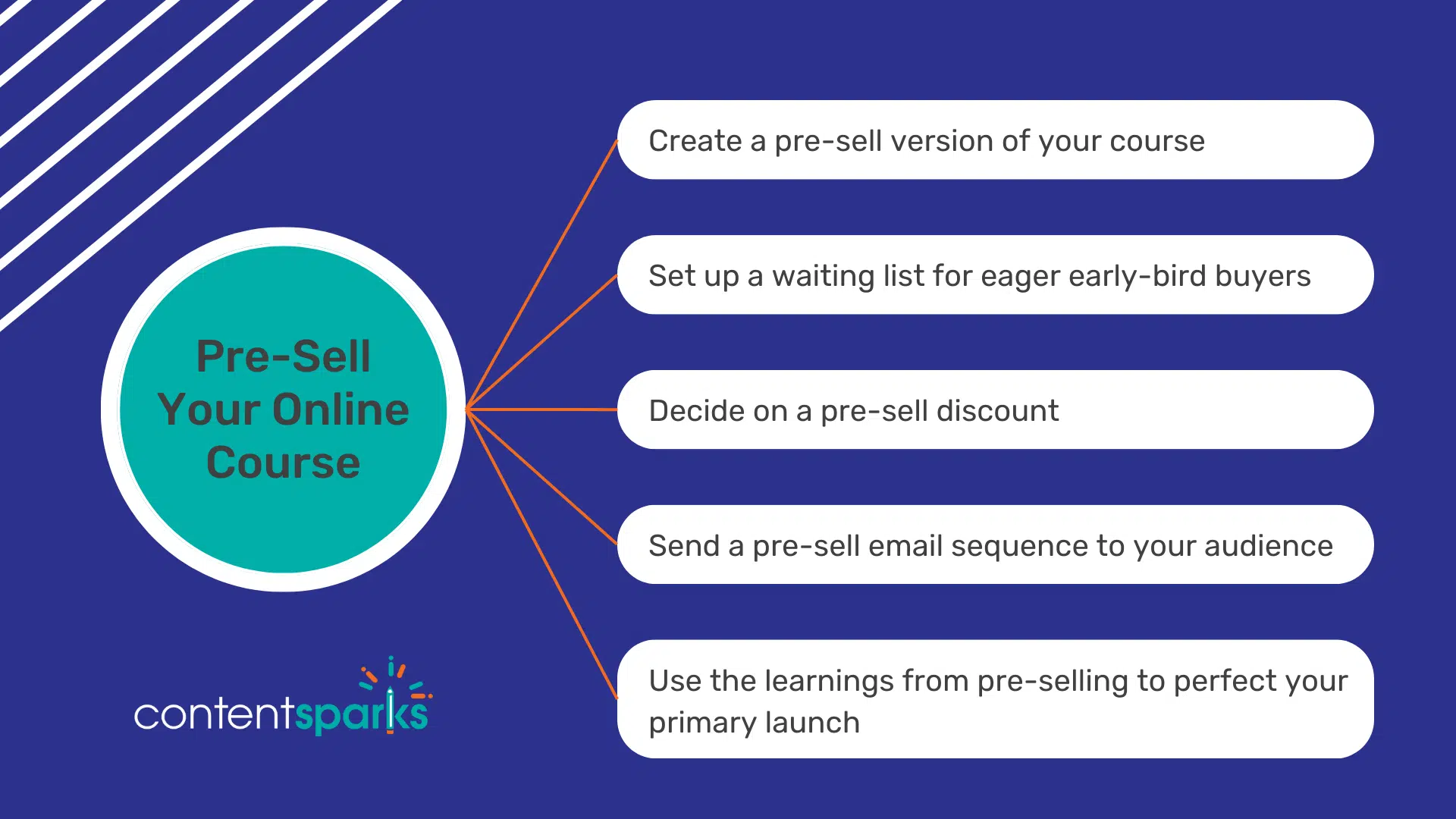
Pre-selling is so important I created a complete guide to pre-selling an online course. Check that out and steal my pre-selling email sequence!
How to Set Up a Sales Launch for Your Online Course
Selling your course is where the rubber hits the road. Especially if you're used to just offering services, transitioning to courses might feel like swapping stilettos for ballet flats.
But, don’t fret! Here's how to strut your stuff:
I’ll walk you through both of these in depth next.
Create a Course Sales Page
After all this hard work you put in, the last thing you need is a course sales page that visitors will bounce off of. Writing sales copy is a mix of art and science. There’s art to writing good copy but there is a formula you can follow that will engage your audience and convince them to buy.
To generate a six-figure income stream, your course sales page needs the following:
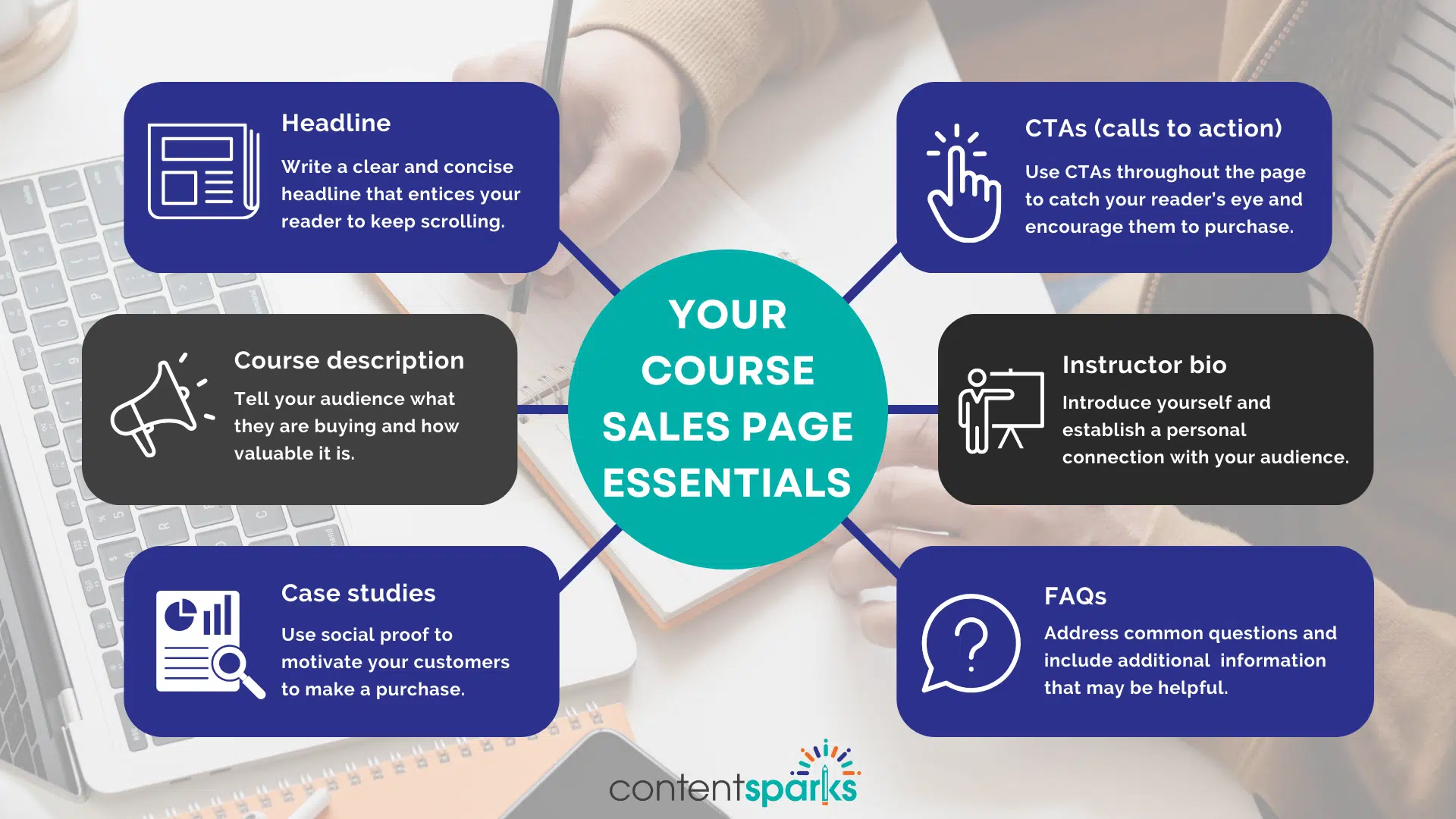
That’s a winning recipe for an effective sales page, though there’s a bit more to sales copy than a super-effective formula. Learn to write a sales page that converts like crazy in my guide,
Write a Sales Sequence to Nurture Your Audience and Sell Your Course
Next up you will need an effective sequence to sell your course to your audience.
Send this sequence once your course is live and you are ready to sell to the audience you have been building leading up to the launch. You can get access to the full launch sequence and templates in my guide, there are 5 emails, in particular, you are going to want to send:
Remember: every email needs one CTA (call to action), and that CTA is going to link to your sales page. If you include too many calls to action it will dilute your traffic and confuse your audience.

Ready To Make A Splash With Your Next Online Course?
Download Our Free Course Launch Checklist (and get 30% off your next order)!
There you have it!
You've journeyed through the maze of online course mastery with me, and now you're on the brink of stardom! For a course to not just swim but to make waves in this vast digital sea, here's what you need:
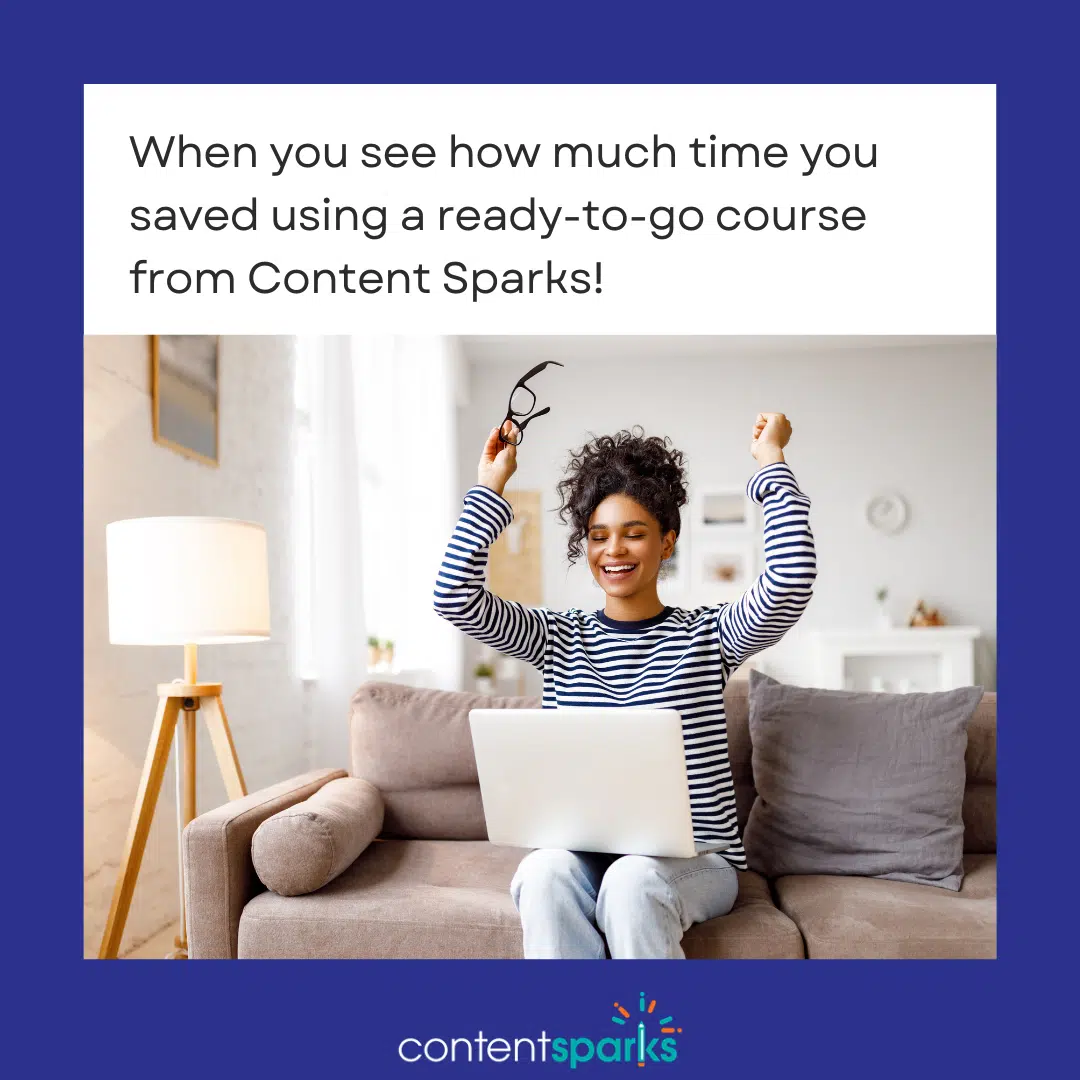
Keeping track of all this and coordinating a course launch is a hefty task. That’s why I created the ultimate course launch checklist for you to download and use in your next course launch.
Click the button below to download the ultimate course launch checklist and watch your next course fly off the (digital) shelf. You’ll get 30% off your next order as a “thank you”, so don’t delay and get that checklist!
Enjoy!
